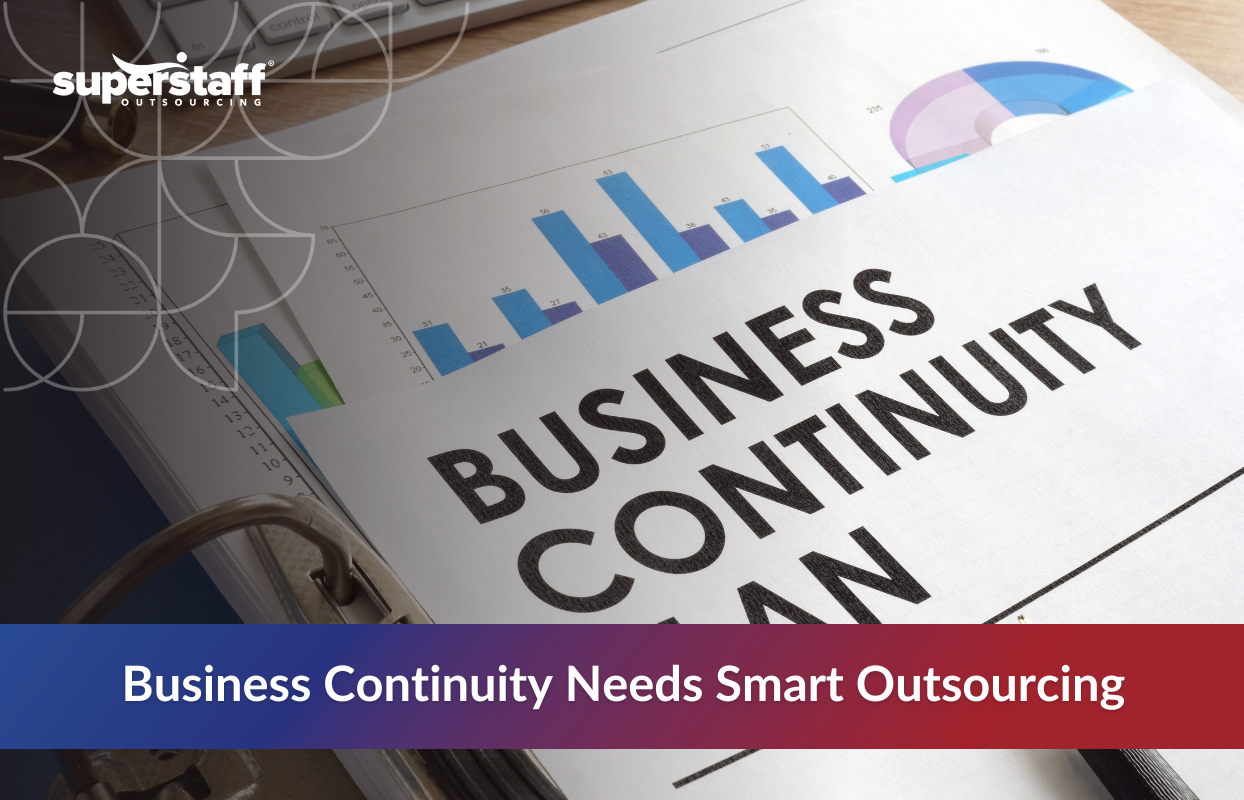
A smooth-sailing internal operation is no longer enough to achieve maximum profitability and stability. In today’s competitive and constantly changing business landscape, leaders must also deeply understand the external environment with which operations should align.
In this regard, we’ve listed nine external forces impacting business growth. We also discuss ways to develop an ideal strategy to confront these business challenges to help unlock your fullest potential.

A crucial aspect of navigating unforeseen market shifts and crafting an adaptable business growth strategy lies in an in-depth understanding of uncontrollable factors. These invaluable insights empower you to be a more well-informed business strategist prepared to navigate challenges and venture into opportunities.
What are the significant challenges facing organizations today?
Economic Conditions
A significant economic challenge in a global business environment is inflation — the increase in costs of products and services.
Due to several global issues, such as the pandemic, supply chain disruptions, and the Russia- Ukraine conflict, inflation in the United States (U.S.) remained dire in 2022, peaking at 9.1% in June. The inflationary situation eased a year later, dropping to only 3% in June 2023.
However, despite the progress, most small business owners (52%) still cite inflation as their top concern in 2023, followed by increasing interest rates (17%).
Technological Advancement
Rapid technological shifts are revolutionizing the way we do business. From artificial intelligence (AI) and machine learning (ML) to the Internet of Things (IoT), increasingly more businesses leverage emerging tech to reshape their operational models, address business problems, and drive them toward commercial success. AI, for instance, is used by businesses to:
- Enhance production processes (53%)
- Optimize search results (52%)
- Process automation (51%)
As consumer expectations evolve with the business landscape, businesses have no option but to adapt and stay current. But regrettably, some firms are still clinging to outdated practices and falling behind in tech advancements. This leads to missed opportunities, resources squandered on inefficient processes, and fading into obscurity due to a lack of social media presence.
Regulatory Environment
Government agencies and legislative bodies regularly review and revise policies to address emerging challenges, ensure fairness, and promote responsible business practices. These regulatory changes can facilitate or hinder long-term business growth, whether in taxation, trade policies, environmental regulations, or industry-specific compliance requirements.
For instance, businesses must monitor tax regulations regularly, given the fluctuating local currency and volatile market. If neglected, businesses will be compelled to pay hefty fines or revoke their licenses for commercial operations.
Social and Cultural Trends
Social and cultural trends also significantly impact businesses across various industries. They shape consumer behavior, influence purchasing decisions, and drive demand for specific products and services.
For example, the rise of sustainability awareness has increased demand for eco-friendly and ethically sourced products. Businesses are also compelled to be “good corporate citizens” by supporting charitable causes, contributing to local communities, and observing ethical standards through a Corporate Social Responsibility (CSR) initiative.
Those who adapt resonate stronger with their target audience. For instance, companies prioritizing diversity and inclusion foster positive workplace environments and appeal to a broader customer base. On the other hand, failing to adapt to evolving social and cultural norms can lead to losing relevance and customer trust.
Demographics
The U.S. is more ethnically and racially diverse today, with Hawaii leading the charge (diversity index score of 76.0), followed by California (69.7) and Nevada (68.8). These changes in population demographics — including age, gender, and ethnic composition — are also huge factors influencing target markets and consumer behavior. As the country’s demographics evolve, brands’ marketing tactics must keep pace to resonate with consumers from all backgrounds.
While diverse marketing campaigns are a growing business trend aiming to authentically represent and connect with their audience’s varied experiences and identities, consumers are interested in more than just surface-level representation. They want to know what brands are doing behind the scenes, beyond the scope of marketing campaigns. They seek transparency and authenticity in a brand’s actions, seeking evidence of inclusivity, equitable practices, and genuine commitment to diversity in their operations, hiring practices, and community engagement efforts.
Environmental Factors
Global warming has permanently affected the environment, causing increased flooding, intense heat waves, and disastrous cyclones. Its number one cause is pollution from goods and services production.
For instance, the fashion industry alone accounts for 10% of the global carbon dioxide emissions. Combined with pollutants from other sectors, this results in a dramatic decline in natural resources.
As raw materials essential for manufacturing become increasingly scarce, their prices inevitably soar, placing economic strain on various business sectors and consumers alike. Businesses must start rethinking how we use our resources and find more sustainable ways of doing things.
Business Globalization
The interconnectedness of global markets means that businesses are increasingly affected by international events, trade agreements, and geopolitical tensions.
One of the most significant issues today is China’s change in international business policies. Most big companies, like Apple, Burberry, and Volkswagen, benefit from China’s massive consumer market. The ripple effect of this economic crisis will be felt by thousands of manufacturers and employees worldwide, including Americans, who work for these corporations.
Interestingly, China represents about 40% of the global business growth. Losing this chunk of the market may heighten economic uncertainty and spike financial volatility. So, to anticipate and adapt to these changes, businesses must keep a close eye on the local and global economy.
Natural Disasters and Geopolitical Events
This 2023 alone, the U.S. sustained 24 climate disasters — including a drought, flooding, tropical cyclone, and wildfire — accumulating a financial loss of over $1 billion. More severe calamities also struck the nation, like Hurricanes Katrina and Harvey, which have cost the country billions of dollars in damage.
Natural disasters can have devastating effects on businesses. The financial toll can be overwhelming, making it challenging for many companies to recover. In some cases, the financial strain becomes so severe that businesses cannot recover, ultimately leading to their demise. This harsh reality underscores the importance of disaster preparedness and resilience for businesses of all sizes.
Technological Security and Data Privacy
Safeguarding data privacy and security can often feel like a constant uphill struggle for many companies. Breaches are more rampant in an age where information is increasingly accessible. It’s a challenge that businesses must face head-on to protect not only their sensitive data but also the trust of their customers and partners.
The fear of being “hacked and tracked” is also rampant among consumers, with almost 60% concerned about security breaches. In 2023, another study reveals that the global annual cost of cybercrime will hit $8 trillion — and after compounding with the increasing cost of damages, it’s expected to soar to $10.5 trillion.
Charting a Course: How to Navigate External Business Factors

Now that we’ve identified different external forces influencing the business climate let’s look at how businesses can strengthen contingency plans and adapt to changes quickly.
Here are some steps businesses can take to address external factors and develop effective growth business plans.
Analyze external factors.
Remove all sorts of biases and be objective. It will help if you answer these questions:
- What is the biggest challenge you are facing right now?
- Do you have adequate resources to support your business in unforeseen circumstances?
- Are you up-to-date with current rules and regulations?
- What messages are you conveying in your branding — and do they appeal to your target market?
- Are you still stuck in traditional means of conducting business?
These questions are excellent starting points, enabling you to evaluate the changes in your industry and set future business goals. You may also lay out the underlying dangers you missed before and tackle them head-on. As we know, swift action is vital because certain risks have the potential to disrupt or even halt your operations if left unattended entirely. It’s all about being proactive and staying ahead of the curve.
Monitor external factors.
As mentioned, the business landscape is dynamic and undergoes regular shifts. That’s why it’s crucial to stay vigilant and look for potential risks and promising opportunities.
Once you’ve gathered and analyzed the relevant data, it’s time to put it to work. Brands should use this information to fine-tune and streamline operations, all while ensuring they’re in sync with the latest laws and regulations to adapt and thrive in this dynamic landscape.
Learn from your competition.
While competition can be seen as a challenge, it’s also a powerful motivator, pushing businesses to improve their product development and customer service.
Take, for example, a rival who pulls off a flash sale just before the big Black Friday and Cyber Monday rush, offering a whopping 50% off everything. To stay ahead, you need not only to match but outperform them. That’s where competitive analysis comes in.
One effective tool in this regard is the SWOT analysis. It’s a game-changer. You can identify your strengths and weaknesses and compare them to your competitors. This gives you a crystal-clear picture of where you stand. Plus, it shines a light on your rivals’ weak spots, which you can leverage to gain an edge. It’s all about turning competition into an opportunity for growth and success!
Diversify your operations.
Some companies go all in and put their eggs in one basket, hoping for a considerable payoff. But it’s a risky move. If things don’t go their way and they drop that basket, they stand to lose everything. It’s like a high-stakes gamble that could result in a significant financial blow.
Diversification and careful risk management are often wiser strategies. Instead of putting all your resources into one venture, spread them across different opportunities. This way, you’re not risking everything if one doesn’t perform as expected. It’s like a safety net for your investment portfolio.
It’s a principle that applies in many areas. Farmers, for example, spread their crops by planting different varieties at different times. This strategy helps mitigate the risk of losing a year’s harvest due to unpredictable weather conditions. It’s all about hedging your bets and reducing vulnerability to potential setbacks.
By venturing into new markets and introducing new products or services, businesses can limit their vulnerability to external influences. Similarly, diversifying their customer base and offerings can further insulate them against abrupt changes in the external environment. These proactive steps serve as a safeguard, allowing businesses to navigate uncertainties and maintain stability even in the face of unexpected shifts.
Invest in internal assets.
Businesses have the power to shape their destiny. One effective strategy they leverage is investing in internal assets like robust databases, intellectual property, and a skilled workforce.
Replacing an employee is costly, sometimes amounting to twice the annual salary of the one who left. That’s why investing in upskilling or reskilling your existing employee is often a more brilliant move. Not only does this ensure that their skills stay relevant and up-to-date, but it also communicates that you’re invested in their long-term career growth. With today’s tight labor market and the various external factors at play, it’s clear that organizations can’t afford to lose valuable, skilled workers. It’s a win-win situation when companies invest in their employees’ development and well-being.
Internal investments can give companies a competitive edge by enhancing efficiency, innovation, and overall capabilities. By strengthening internal resources, companies position themselves for growth and fortify their resilience against external challenges. This proactive approach empowers businesses to navigate the dynamic landscape confidently.
Collaborate with outsourced experts.
Understanding customer behavior is like having a treasure trove of information about their pain points, preferences, desires, and needs. This insight is invaluable for businesses that tailor their products or services to meet customer expectations.
If a company lacks the resources or expertise to gather and analyze this data, partnering with reputable BPO firms can be brilliant. These specialized entities are well-equipped to handle customer data securely and possess the expertise to grasp and navigate target markets effectively. It’s a strategic way for businesses to leverage customer insights for their benefit.
If you’re hiring a team of data specialists, they usually forecast your customer behaviors using three processes:
- Data entry: Inputting information from various sources
- Data analytics: Converting raw data into actionable insights
- Data science: Studying the converted data to extract relevant information
Mitigate Risks of External Factors Affecting Your Business Growth
Business success hinges on addressing both internal challenges and external market demands. Neglecting either aspect may lead to customer attrition and, ultimately, business closure.
Fortunately, with SuperStaff, we can help mitigate this risk and foster a narrative of advancement.
Our team of data science engineers excels in consolidating pertinent information about the contemporary business environment, empowering you to proactively navigate unforeseen circumstances, make informed choices, and capitalize on potential avenues for growth.






